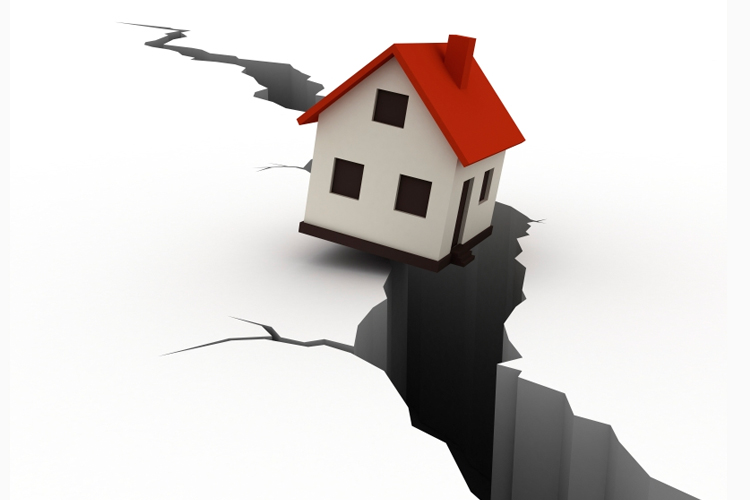
Photo : ThingLink
Everything goes through transformation or birth and death. Take Earth as an example, we don’t know how many planets like it have been created and/or destroyed. Even the abiotic elements along with the biotic ones experience the change. And it’s necessary to maintain the equilibrium in the universe. The same takes place on our planet via natural disasters, the nature’s way of causing damage to the world with an ulterior motive maybe. For example, we have floods, earthquakes, cyclones, tsunamis…And as per my opinion, earthquakes are more prevalent as compared to the others mentioned.
Also known as seisms, quakes, and temblors, earthquakes are most common in countries like Japan ( at the top ), India, Nepal, Pakistan, Philippines…Living in Punjab, I’ve have witnessed it multiple times. There are numerous causes behind this disaster. We can categorize it into Natural and Man-made.
The Natural causes are further divided into three types, namely Tectonic and Volcanic. When the earth was formed, it was damn hot and since it’s cooling down on the surface from that time onwards, it leads to motion of its parts ( faults or tectonic plates ) resulting into seismic waves ( measured by an instrument known as seismograph ) causing an earthquake. The volcanic eruptions can result into quakes too. This happens due to lava displacement inside or under the earth crust. Avalanches, landslides, smashing of sea waves can give rise to minor tremors. Ring of the Fire are the areas around the world most prone to earthquakes. Coming to the activities of man engendering this catastrophe, dams and reservoirs are believed to be one of the reasons causing quakes, due to the heaviness of such a mammoth amount of water. Besides, geothermal power plants have their share in enhancing seismic activity. The groundwater extraction lowers the water table which can unstable the faults present.
The implications of earthquakes are innumerable. Fundamental effects include the caving in of infrastructure or buildings, breaking of bridges, which can kill a significant number of organisms, mainly animals ( humans and fauna ). A little fortunate ones are badly injured or psychologically pained. Among the vicarious consequences, possibilities of disease, famine, fire, floods, soil liquefaction etc. are there. This further results into loss and contamination of resources like money, water, food and like.
Science has developed hundreds of technological methods to prevent earthquakes and is looking forward to generate many more. The old Utah State Capitol has its own Isolation System, Coney Island’s Parachute Jump has shock absorbers to resist quakes. Also, Tuned Mass Damper ( Pendulum Power in Skyscrapers… ) at Taipei 101 in Taiwan, Replaceable Fuses, Rocking Core-wall, Seismic Invisibility Cloak, Shape Memory Alloys, Carbon Fibre Wrap, Biomaterials, Cardboard Tubes are being used against temblors.
Science and technology has always saved lives, be it through medical advances or others. I don’t think we humans in spite of being significantly powerful can prevent any natural disaster to a large extent ( earthquakes are difficult to detect too ). Instead we can take precautions and minimise the repercussions. This goes in the following ways. Dams should be constructed keeping in mind the weight of water the land can handle without causing any harm to the environment. Almost the same goes for the groundwater extraction and geothermal powerplants. We have better options than hydroelectricity like renewable sources of energy ( solar, wind, etc. ). Moreover, rainwater harvesting is a great way regarding conservation of water. These days a new type of concrete is being developed ( to be used in making roads ) which has a prodigious power of absorbing water. The construction activities in the hilly or mountainous areas should undergo a careful and strict check before commencement because when the big rocks are cut to form roads, tunnels etc., it weakens the base of the rocks, giving rise to tremors, indirectly to avalanches, landslides and floods. The architectural aspects of accommodations or residences should be kept in mind. What I’ve observed is that in countries like India, we use bricks to build houses, whereas western nations use wood. So, the ramifications of earthquakes are reduced in the latter case in terms of harm to the lives. Engineering can aid in developing such a technic where buildings rise bit above the ground to feel less wrath of the seisms.
Despite all said above, there is a huge need to educate people about the disaster management techniques. Earthquake survival kits should be maintained at dwellings. Doors and drawers should be secured with latches to avoid damage from the falling objects. One must have fire extinguishers within reach at homes. During an earthquake, if you can escape the building, go to an open space or hide yourself under a heavy table otherwise ( if you’re inside ).
All in all, earthquakes are one of nature’s biggest furies. It’s detection as well as prevention are quite arduous, even with the existing knowledge and techniques developed by scientists. So, what we can do the best is aware people more about how to take precautions in case of a disaster.
Author Bio – Mandeep Singh, 23 years old from Chandigarh ( Punjab, India ). A participant of Monthly Essay Competitionorganized by #Monomousumi, December, 2018.


